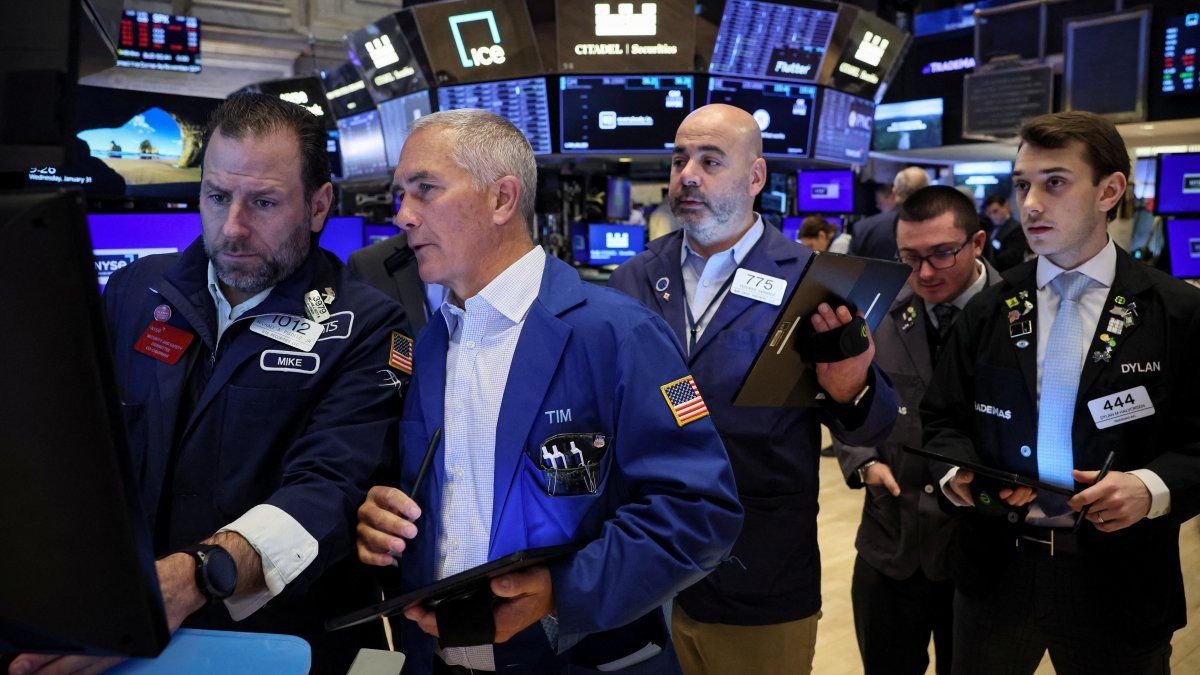Analysts debate whether or not there is a bubble in Nvidiaor in the other six also called “magnificent” (Apple, Alphabet, Amazon, Meta, Microsoft and Tesla), while a Wall Street giant like JP Morgan He recently came out to maintain that there is no exacerbation in this group of techno actions. Of course, he also does not fail to recognize that it is not very healthy for Wall Street to show extreme concentration where these seven stocks currently represent almost a third of the total capitalization.
Although the fever remains due to “7 magnificent” of the US the strategists of the Deutsche Bank They have focused on the “Fabulous 5” in Europe, a group of companies that have allowed the Stoxx 600 index (similar to the S&P500) achieve objectives ahead of schedule.
For the German bank’s analysts, these five large European stocks have led to the good performance of the Old Continent’s stock markets since the beginning of the year, in the same way that the “magnificent 7” did with the Wall Street indices since 2024 began and, due to contagion, to the rest of the world stock markets.
Deutsche does not expect to see the Stoxx 600 at current levels in the first quarter of the year but the surprising and strong rise is explained by the solid performance of only a handful of companies.
Who are the fabulous 5
When analyzing the phenomenon of market concentration in Europe, they monitored the group of the 5 largest companies by capitalization, which they called, in clear reference to their American peers, the “Fabulous 5”: Novo Nordisk, LVMH, ASML, Nestlé and L’Oréal. To get an idea of its performance, The Danish pharmaceutical company Novo appreciated more than 680% in the last 10 years, the luxury group Vuitton almost 730%, the Dutch technology holding more than 1,420%; Swiss food by more than 130%; and the French cosmetics company almost 325%.
When confronted, both teams present strengths and weaknesses, as while the “Magnificent 7” stand out for their historically stronger earnings growth and performance, The “fabulous 5” manage to convince with a better risk profile, for the German bank that considers both groups important elements in a diversified portfolio.
According to Deutsche, The “Fab Five” have contributed almost 2 percentage points to the Stoxx 600’s year-to-date performance (+5.5%). These five actions are, for the German bank, a opportunity for non-European investors to access companies from the Old Continent who are global leaders in their industries. But given the decline in risk aversion in the market, they warn that investors may look for new opportunities, which on the one hand would contribute to the upward trend and, on the other, reduce concentration.
It is worth remembering that Europe in search of its stock market dream team in line with the “7 magnificent” knew thefirst list of Goldman Sachs’ Granolas, then Citigroup’s Super 7 and Société’s 7 Wonders, and now Deutsche Bank provided its quintet.
Now, after Goldman Sachs launched the idea of Granolas as a way to describe the European companies with the highest capitalization, the comparison between that European group and the “magnificent 7” of the United States attracted the attention of investors, offering a Interesting perspective on global market dynamics. However, as platform experts warn eToro An in-depth analysis of the fundamental differences between these two groups of stock market giants raises serious doubts about the validity of such comparisons, and the conclusions that are drawn in this regard.
The Granola group, which includes GSK, Roche, ASML, Nestlé, Novartis, Novo Nordisk, L’Oréal, LVMH, Astrazeneca, SAP and Sanofi, reflects the diversity of European economies and covers a wide range of sectors, from pharmaceuticals to luxury goods and technology. Instead, the “Magnificent 7” focus mainly on the technology sector, which has seen explosive growth in the last decade and a significant impact on the global economy. This sectoral concentration suggests that their valuation bases and market dynamics are intrinsically different.
Another important aspect is the valuation and dividend yield where Granolas would put more emphasis on long-term returns through sustainability and dividends, as opposed to capital growth among US technology companies. In addition, risk and geographic exposure also influence the comparison since Granola sales represent less than 20% in Europe, being more exposed to global market trends and currency fluctuations than their US peers.
They are all differences when comparing. But for an investor they can serve to achieve correct exposure to the European market and, for example, to its MSCI Europe index, with that group of Granolas or another chosen group, in the same way that the Magnificent 7 do with respect to the S&P500.
Source: Ambito
I am a 24-year-old writer and journalist who has been working in the news industry for the past two years. I write primarily about market news, so if you’re looking for insights into what’s going on in the stock market or economic indicators, you’ve come to the right place. I also dabble in writing articles on lifestyle trends and pop culture news.




